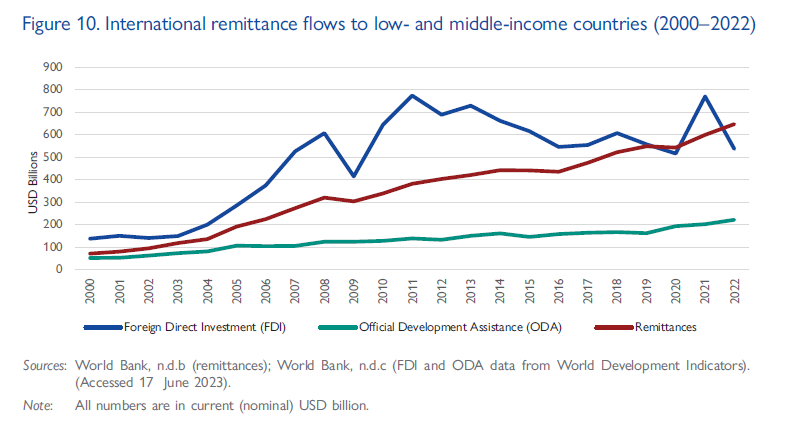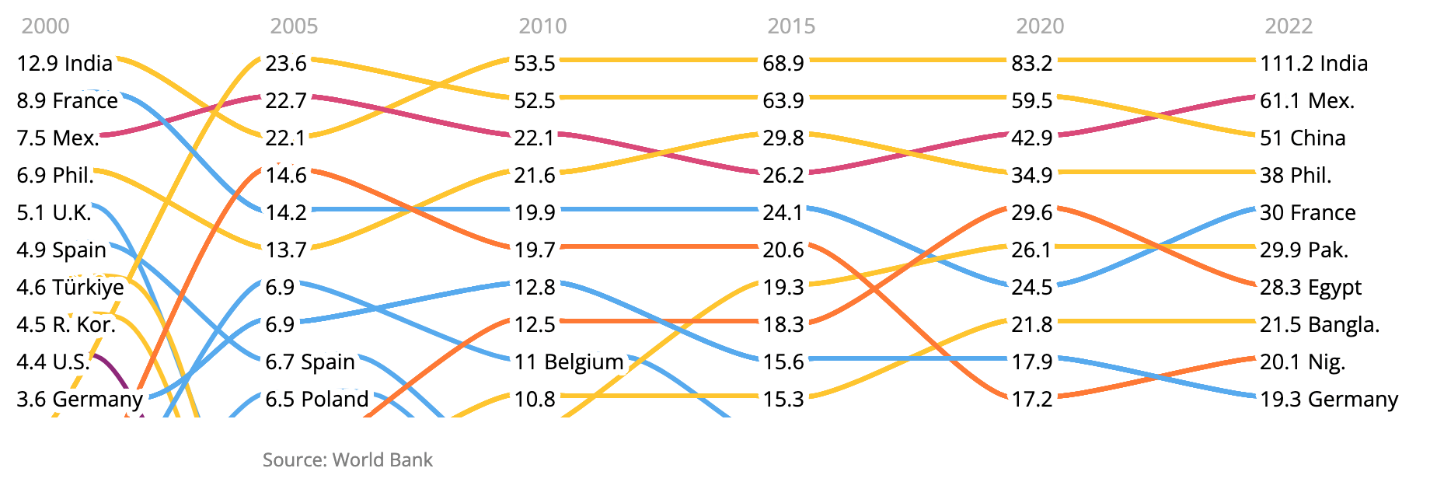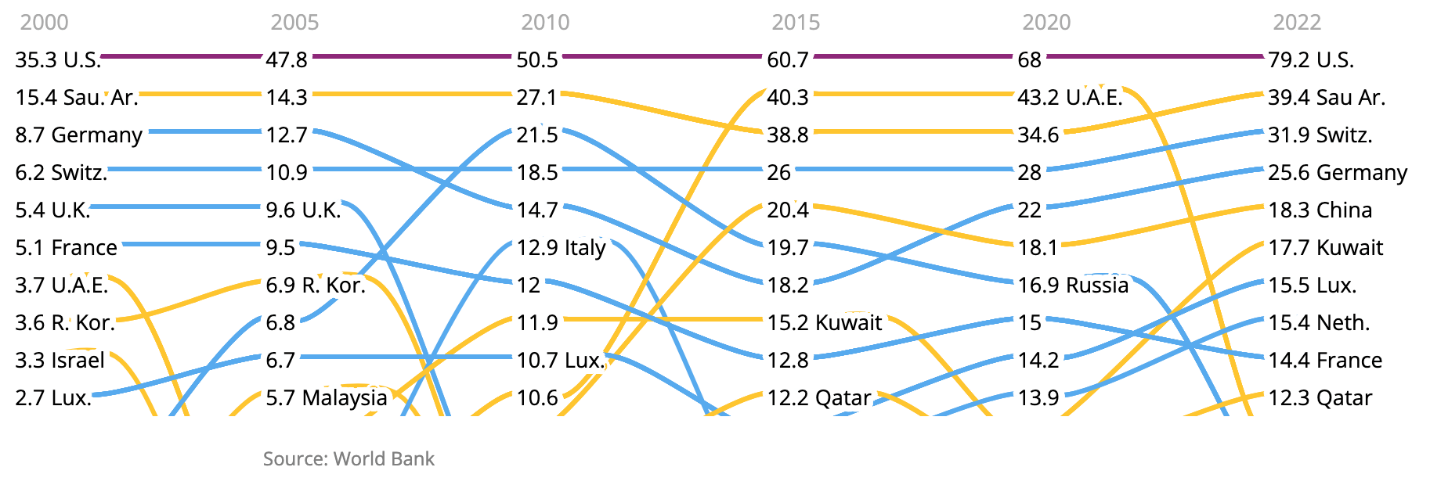Migrants’ Contributions
International remittances
International remittances are financial or in-kind transfers made by migrants directly to families or communities in their countries of origin. They represent an enormous contribution of migrants to their countries of origin, enabling family members and communities to meet basic household needs, such as food and shelter, and alleviate poverty (Mohieldin and Ratha, 2019).
The World Bank compiles global data on international remittances, even though there are many methodological challenges in compiling accurate statistics about remittances, and many data gaps and definitional differences. Its data, however, do not capture unrecorded flows through formal or informal migration channels, and the actual magnitude of global remittances is, therefore, likely to be larger than available data estimates.
International remittances have recovered from the dip in 2020 due to the COVID-19 pandemic. Migrants sent an estimated USD 831 billion in international remittances globally in 2022, an increase from USD 791 billion in 2021 and significantly more than USD 717 billion in 2020. As in previous years, low- and middle-income countries continued to receive vast sums of remittance inflows, which increased by 8 per cent between 2021 and 2022 from USD 599 billion to USD 647 billion. Since the mid-1990s, international remittances have greatly surpassed official development assistance levels defined as government aid designed to promote the economic development and welfare of developing countries; they have also recently overtaken foreign direct investment (see figure below).
Figure 1: International remittance flows to low- and middle-income countries (2000—2022)

From WMR 2024, Ch. 2
In 2022, India, Mexico, China, the Philippines, and Egypt were (i descending order) the top five remittance recipient countries, althoug India was well above the rest, with total inward remittances exceeding $111 billion, the first country to reach and even exceed $100 billion.
Figure 2: How the top ten remittance recipients have shifted since 2000 (USD billion)

Source: World Bank, in World Migration Report 2024 Interactive. Note: All numbers are in current (nominal) USD billion.
High-income countries are almost always the main source of remittances. For decades, the United States has consistently been the top remittance-sending country, with a total outflow of $79 billion in 2022, followed by Saudi Arabia ($39 billion), Switzerland ($31.9 billion), and Germany ($25.6 billion).
Figure 3: How the top ten remittance sources have shifted since 2000 (USD billion)

Source: World Bank, in World Migration Report 2024 Interactive. Note: All numbers are in current (nominal) USD billion.
For the interactive versions of these graphs, see Interactive World Migration Report 2024.
What are international remittances? Why are they so important for migrants’ families and communities in countries of origin?
Low- and middle-income countries continued to receive vast sums of remittance inflows, which increased by per cent between 2021 and 2022, from USD billion to USD billion. What does this data tell us?
Did the COVID-19 pandemic cause a slight rise (spike) or slight decline (dip) in international remittances?
- Calculate the growth rate of received international remittances between 2000 and 2022 for India and Mexico.